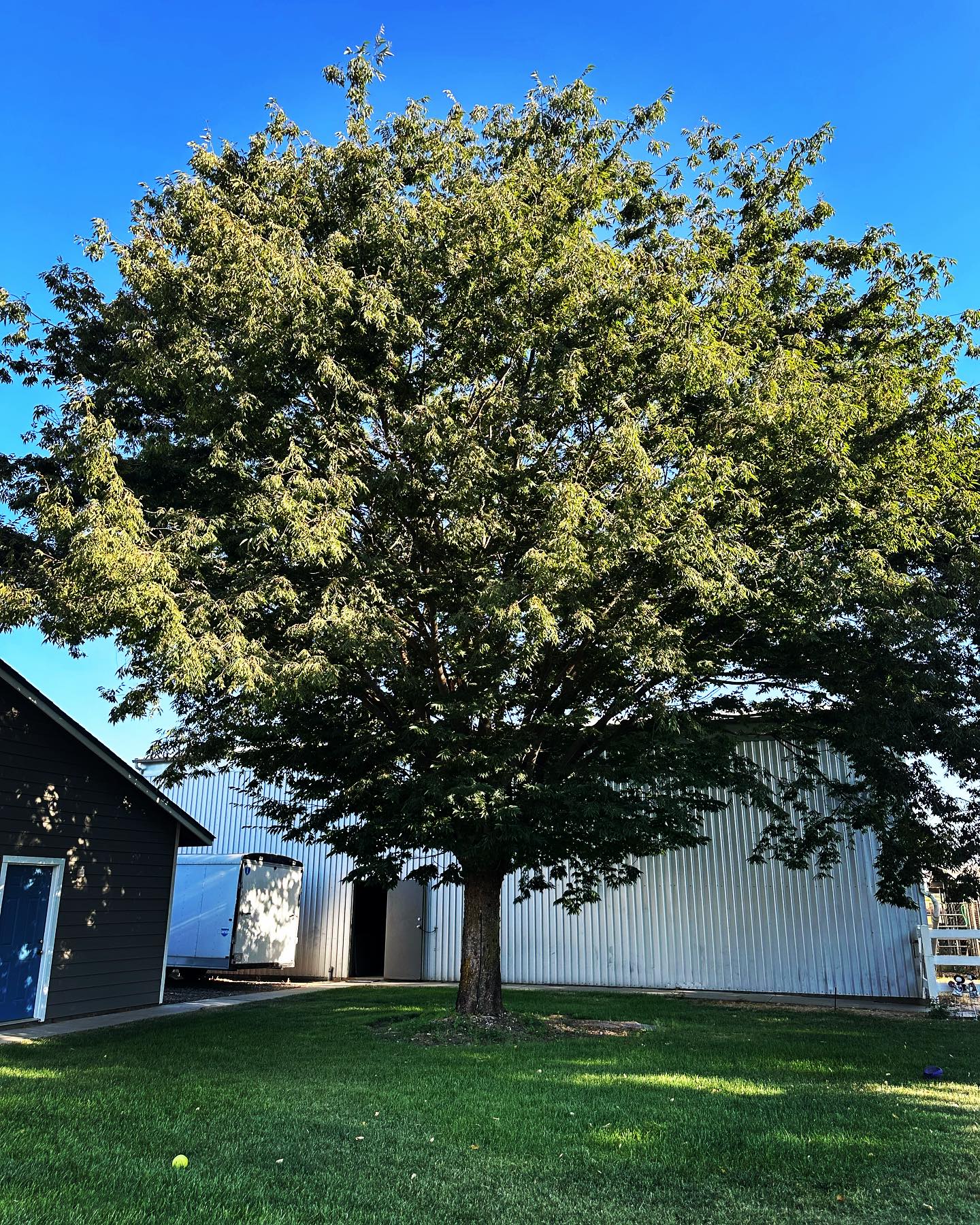Our ecology depends on trees, which also improve the appeal of your house. Still, keeping their health calls for consistent maintenance including cutting. Identifying the indicators of trouble will help your trees live longer and avoid more damage. This manual will teach you how to spot when your trees require tree trimming for health concerns and how quick action can help the trees as well as you.
The Importance of Tree Health
Good trees enhance air quality, offer shade, and even raise property value. Trees can, however, also suffer from diseases, pests, and physical injury, much as any other living being. Ignoring these problems can cause the tree to fall, and in extreme circumstances they could endanger people and belongings. Maintaining their health depends on regular tree care, including trimming.

The Role of Trimming in Maintaining Tree Health
Not only is trimming cosmetic; it also greatly affects the health of your trees. Eliminating dead, sick, or overgrown limbs will help to trim:
- Prevents the spread of disease.
- Improves air circulation and sunlight exposure.
- Reduces stress on the tree’s structure.
- Encourages healthy, vigorous growth.
Your trees will remain healthy for years to come with timely trimming.
Common Signs of Tree Distress
When your trees require care, they typically display symptoms of trouble. First step in acting with corrections is learning to identify these symptoms.
Visible Damage
- Broken or Dead Branches: The most evident indication your tree needs cutting are broken or dead branches. Brittle dead wood can fall without notice and create safety risks. Broken branches could also draw diseases or pests, which could affect otherwise healthy sections of the tree.
- Cankers and Disease Spots: Cankers are sunken or discolored areas on a tree’s bark, indicating disease or fungal infections. Similar underlying tree health problems are indicated by black, white, or brown patches on leaves or branches. Early trimming helps to eliminate impacted areas before the disease progresses.
- Insect Infestations: Indices of insect activity—holes in the bark, sawdust-like material, or concentrations of insects—point to your tree under attack. By cutting infected branches, one can help to control the issue and safeguard the rest of the tree.
Growth Issues
- Slow Growth or Stunted Growth: Your tree can be worried if it isn’t developing as intended. Branches crowded too closely can restrict nutrient distribution, hence trimming is essential to let the tree thrive.
- Excessive Leaf Drop: Although some leaf shedding is natural, an abnormally high level could indicate problems for your tree. Leaf drop often results from stress from illnesses, pests, or bad conditions.
- Poor Leaf Color: Leaves should seem bright and healthy. Red flags are pale, fading, browning foliage. Many times, these problems result from insufficient light or poor air circulation; trimming can help with both.
Structural Problems
- Leaning or Tilting: A tree leaning more than usual or suddenly may have structural instability or compromised roots. Although it won’t solve root problems, cutting can help to lower top-heaviness and stop more tilting.
- Weak or Split Branches: Weak branches or ones breaking near the root can break suddenly. Cutting these branches lessens the possibility of property damage or harm.
- Hollow Trunks or Cavities: Signs of deterioration are hollow parts in the trunk or big cavities. These compromise the tree and raise its falling risk. Eliminating compromised limbs helps the tree live for many years.

The Benefits of Timely Trimming
Early resolution of tree problems will help your trees remain robust and healthy.
Improved Health
- Removal of Diseased and Damaged Wood: Eliminating diseased elements stops the spread of decay or infection, therefore enabling the tree to recover.
- Enhanced Air Circulation and Sunlight Penetration: Trimming improves airflow and ensures sunlight reaches all parts of the tree, promoting overall health.
Stronger Structure
- Reduced Weight and Stress on Branches: Overgrown limbs pull on the tree. Reducing them helps you to lighten this load and strengthen the tree.
- Prevention of Branch Failure: Branches either weak or strong are more prone to break. Trimming lowers the possibility of unplanned breaking.
Increased Longevity
- Promoting Vigorous Growth: Strategic cutting promotes fresh growth, therefore improving the health and color of the tree.
- Enhancing Resistance to Pests and Diseases: A tree kept well is more suited to fight fungus and insects.
When to Seek Professional Help
While some cutting chores are doable, some call for professional tree treatment. Knowing when to hire an arborist will help you avoid mishaps, save time and effort.
Severe Damage
- Extensive Storm Damage: Storm-torn trees may have several damaged limbs or unstable limbs that call for expert handling.
- Significant Disease or Insect Infestation: Advanced phases of sickness or infestation usually need for professional diagnosis and treatment.
Complex Pruning Needs
- Difficult-to-Reach Branches: High or awkwardly placed branches can be dangerous to trim without proper equipment and skills.
- Large, Mature Trees: Older trees sometimes need careful trimming to prevent compromising their general integrity or health.
Safety Concerns
- Hazardous Tree Conditions: Large dead branches or structural problems in trees expose hazards to persons and property. Professionals are able to manage these safely.
- Risk of Property Damage: Near buildings or electricity lines, trees call for exact trimming to avoid mishaps.

Conclusion
- The Importance of Regular Tree Inspections: Frequent tree check guarantees early identification of possible issues. A little look can help your trees flourish and stop expensive damage.
- The Benefits of Hiring a Qualified Arborist: Although do-it-yourself trimming is possible, complicated situations are better left to experts. Arborists guarantee your trees stay healthy for years to come by using their knowledge and instruments to safely and effectively manage the work.
Maintaining your trees invests in your house and the surroundings. Regular tree trimming of them and seeking assistance when needed aid to guarantee their continuous growth in strength and health.
Tree Trimming Richmond
(804) 533-3943
https://treetrimmingrichmond.com/



